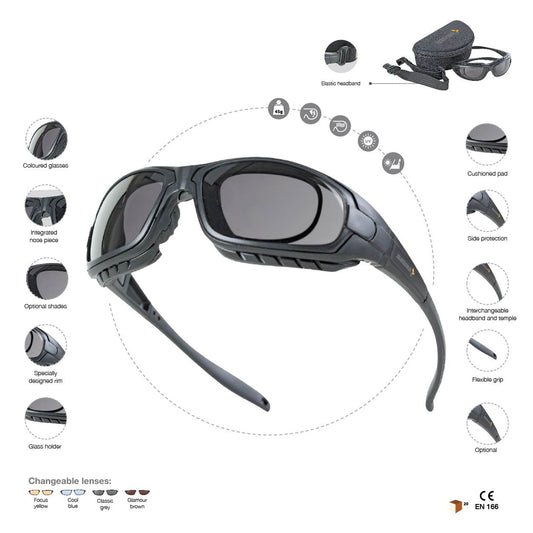Getting wet in the rain is one of the worst feelings. But what’s worse is having to work while it’s pouring. The cold & damp weather, the drenched feeling, boots soaking wet throughout the day, poor visibility and the slipping tools due to poor grip, all makes the entire experience not only difficult but also hazardous.
How does it impact a business?
Rain can pose a serious risk to the overall health and well-being of workers, eventually impacting the business. For instance, rain is the primary cause of cold & flu, which further results in medical expenses and pay loss for the worker. The impact is not limited to employees but the companies also get affected, incurring severe losses in earnings and productivity.
The following stats show how outdoor workers get affected by rain, and how it impacts a business.
- An estimated $10.4 billion a year was lost in direct medical expenses and another $16.3 billion in lost earnings annually.
- Employees missed approximately 17 million workdays, costing a loss of an estimated $7 billion a year in sick days. (Source: Facts and Statistics About the Flu )
What’s interesting is the fact that people who choose to go to work even after being sick. Cold and flu resulted in approximately 60% loss in productivity — way higher than the productivity loss which would have resulted with a day off.
WHAT IS THE SOLUTION?
Ensuring the availability of proper rainwear and other rain gear can help businesses ensure a proper working environment for their employees, even while it’s raining. This helps them protect their workers from falling sick and also avoid any losses incurred due to workplace injuries.
HOW TO FIND THE RIGHT RAINWEAR FOR YOUR WORKERS?
1. Choose the right material
First and foremost, it is essential to understand the different materials used in making rainwear and their impact on the protection offered by the PPE.
- Breathable rainwear made using Polyester: Breathable rainwear is made of polyester and allows the wearer’s body to breath through it. These rainwear products can range from water-repellent to waterproof, depending on the announced hydrostatic head of the garments.
- PVC rainwear: Rainwear garments made using PVS is as good as being 100% waterproof with high resistance to water and can withstand a comparatively high hydrostatic pressure.
- Polyurethane Rainwear: These rainwear products have a rubber surface which ensures a high hydrostatic head, enabling it to keep more water out of the suit.
The material used in the rainwear influences several factors associated with the overall quality and functionality of the product.
- The heavier the material is, the harder it will be for the wearer to work for longer hours.
- The material also influences the breathability factor i.e how easier it will be to let steam and perspiration out.
Visibility Component
Low-visibility and the accidents/injuries happening due to it is a common hurdle for workers. Thus, when choosing rainwear, make sure the clothing has a horizontal stripe (also a standard requirement) that goes completely around the garment and reflects light and makes the worker visible to people and vehicles passing by. The rainwear should also feature two vertical stripes on the front, passing over the shoulders and down to the waist along with a symmetric ‘X’ on the back that extends from the shoulders to the waist.
Fitting
Ensuring the right fit applies to all PPEs including rainwear. The product needs to fit the wearer perfectly in order for it to be comfortable for the worker. If the PPE doesn’t fit well, the worker won’t be able to layer any additional clothing underneath (if required depending on the weather).
Stitching
There are two kinds of stitching patterns in rainwear: overcast and hemstitching. It is recommended to ask for hemmed edges. Overcast stitching is one continuous thread. This means if the thread breaks, the entire seam will unravel. Comparatively, in hemstitched rainwear, the fabrics are folded over the edge and its layers are stitched together. This kind of stitching ensures the rainwear stands up to leakage and lasts longer.
Apart from the above-shared factors, you must also check with the manufacturer about the quality tests conducted on the product. For instance, a Level 3 Water Repellent Test and a Breathability Test (according to ISO 11092) is mandatory for all Mallcom rainwear products. The latest rainwear from Mallcom – Stratus and Nimbus is available on Amazon & Flipkart.
Additionally, if you need any more help, feel free to contact your nearest Mallcom dealer. You can find your nearest Mallcom dealer using https://www.mallcom.in/dealer#lookup




